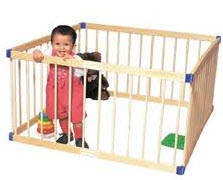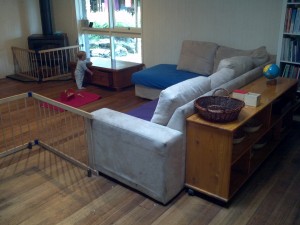The Montessori Method is also a philosophy. As a parent it is important to understand that everything we do with our children, how we interact with them and the environment they blossom within are key elements to this philosophy.
Although many of the lessons and presentations are step-by-step, the overall methodology is not necessarily sequential. We need to provide the tools and environment that are always available to the child in order for them to have sufficient freedom of movement and access to materials and equipment in order to feed their “absorbent minds”.
If you have read Montessori’s Own Handbook (which you would have received when signing up as a Free Member at MontessoriHelper.com) you will notice she refers to the “prepared environment.”
This in essence is the preparation of an environment that is a vital part of her method. We recommend you read this book if you have not done so already.
Now, their are Montessori Schools that we can go to which will generally provide the Montessori Environment required, but many parents want to provide the environment at home. We will help you to achieve this, all you need to do is keep reading this article. Please note that the suggestions we give are just that, they are not prescriptive and as a parent you can apply some initiative to find what works best for you. Once you understand the reasons behind our examples though, perhaps that will help you to make the choices you would think are best.
The key thing we propose is that your home environment be centred around the child. Most parents have a home in which the child’s environment is centred around adults. This is common convention and much of the items we buy for children are in themselves restrictive of movement because they give adults more control over children. A good example of this is the conventional “playpen”.
 The child may seem happy, but as we mentioned above, by using this approach we are merely fitting the child into our adult environment and at the same time restricting their movement.
The child may seem happy, but as we mentioned above, by using this approach we are merely fitting the child into our adult environment and at the same time restricting their movement.
What we should be looking to do is redesign our (adult) environment to fit with the child.
Although this is a short statement, think on it for a while.
Is it not common sense that a child will be more stimulated if they have more space to explore and learn ?
The reality is that this is not generally the prevailing approach of most parents, simply because we live in a time poor world where controlling our environment saves time, and the proliferation of products for infants makes it easier to go down this path. In many instances we also just don’t know any better, perhaps based on the fact that approaches like these are so common place….our parents did it, our friends do it, so it must be fine.
 Here is an example of how we have prepared our home Montessori Environment. The first thing you will notice is that we have extended the child’s environment into the adult environment, thereby allowing significantly greater freedom of movement.
Here is an example of how we have prepared our home Montessori Environment. The first thing you will notice is that we have extended the child’s environment into the adult environment, thereby allowing significantly greater freedom of movement.
We have also included the following items :
– A Montessori Cabinet with activities ready for the child’s use. Although you would not necessarily use exactly the same cabinet, it is important that the items are all visible and available at the child’s line of site.
– A large coffee table with drawers that the child can open and close at will. This is optional. We have used it as part of the child’s environment to aid gross motor skills and to some extent a sense of “mastery” of the environment from the child’s perspective. Their is nothing within the environment that cannot be handled or explored by the child.
– A large work environment where the child can work with the items from the cabinet.
– “Baby proofing” which is just common sense
We suggest that if you simply follow a similar approach to setting up your home environment and think about both space and access to Montessori Activities that you will have made a good start towards creating your own Montessori home environment.
Although the environment we have set up is in our main living room, this can be established in any room in the house, the key is that the child has easy access to the environment. In our example we have chosen the living room because of the improved social interaction with the family and increased access it allows.
In a follow up article we will go into more detail as to the activities we would include for the age groups of birth to three and three to six, as well as further detail around the activities (also available from montessorihelper.com) and how we would present them within the home.

 '
'
Sorry, the comment form is closed at this time.